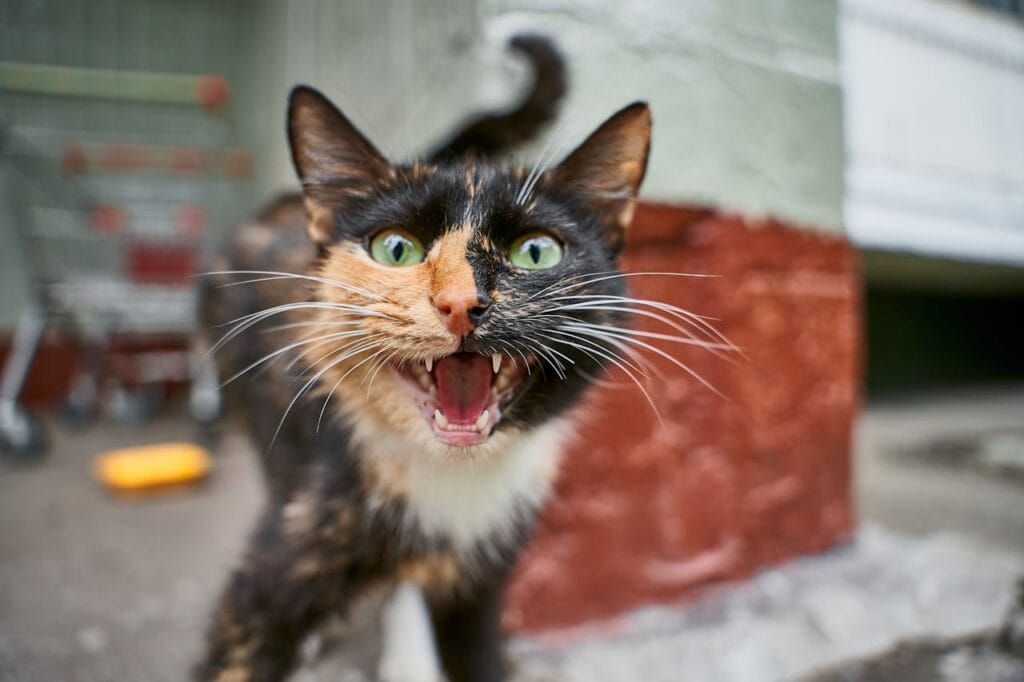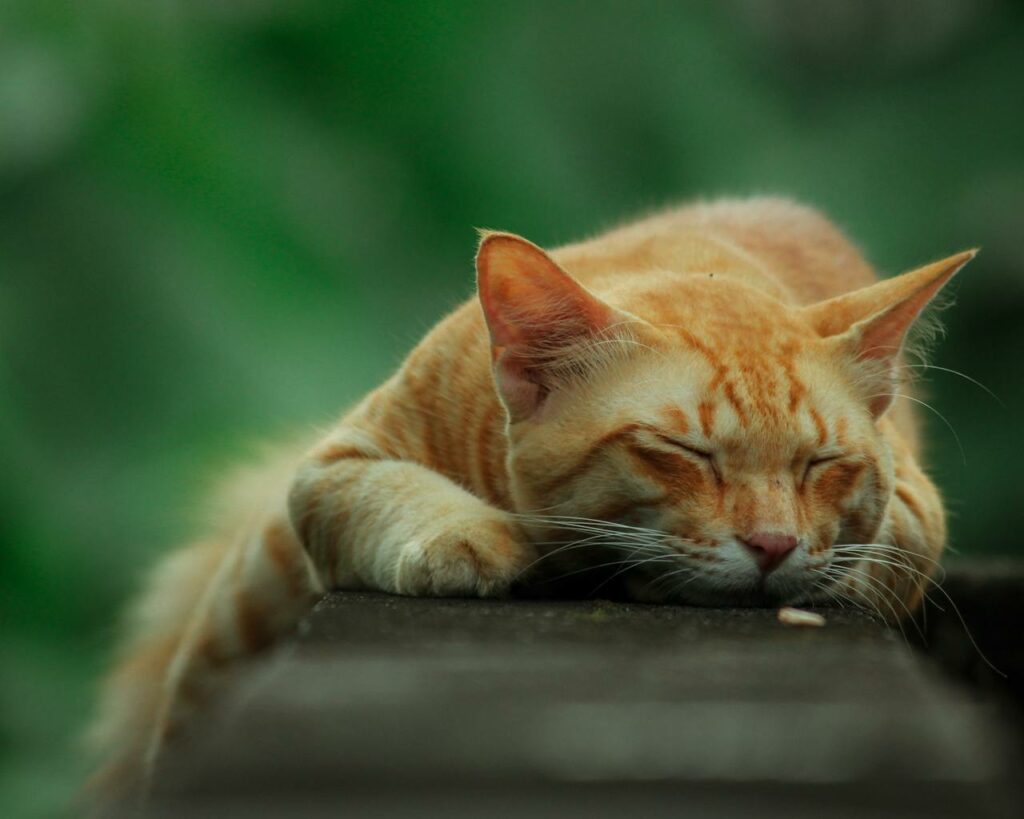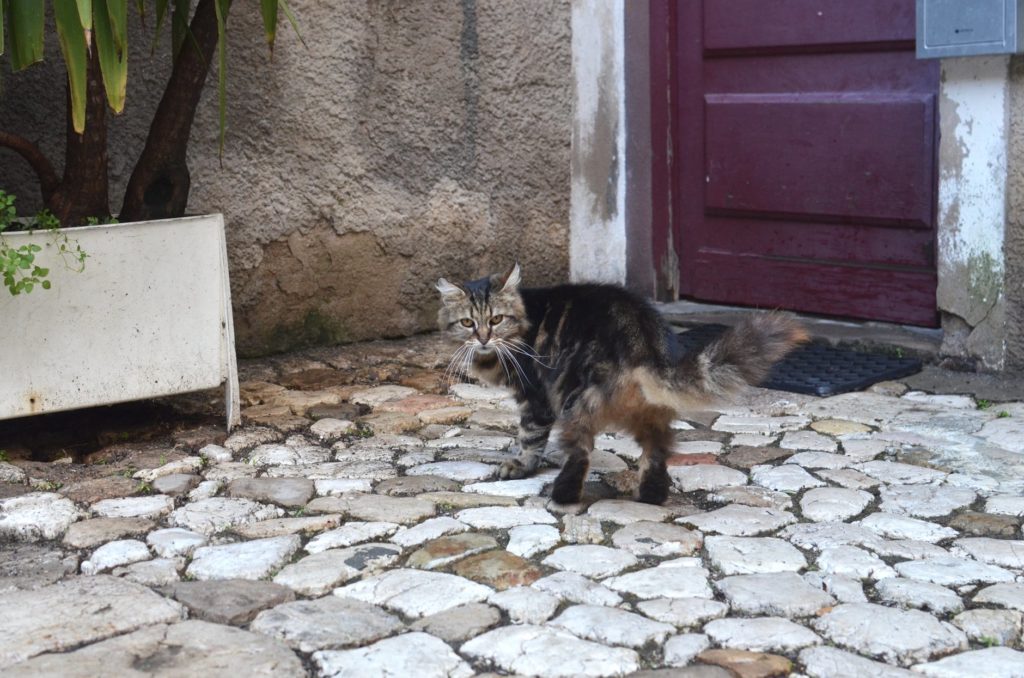The Silent Meow
As cat lovers, we often find ourselves in situations where our furry friends are trying to communicate with us. Whether it’s a subtle tail flick or a loud meow, our feline companions have their own unique language that they use to convey their feelings and needs. Unfortunately, many people misunderstand cat communication, leading to confusion and misinterpretation of their behavior. In this article, we will explore the silent meow, one of the many ways that cats communicate, and help you understand what your feline friend is trying to tell you.

Table of Contents
The Silent Meow: What Is It?
Have you ever noticed your cat opening their mouth to meow, but no sound comes out? This is the silent meow, and it’s one of the ways that cats communicate with us. While it may seem like your cat is simply not making noise, the silent meow is actually a vocalization that cats use to communicate their needs or feelings.
When a cat silently meows, they are using their facial muscles to create the same movements and expressions as a regular meow, but without making any noise. This is often accompanied by other body language cues, such as rubbing against your leg or kneading with their paws.
Why Do Cats Use the Silent Meow?
There are several reasons why cats use silent meows to communicate:
- Seeking Attention: One of the most common reasons is that they are trying to get your attention. If your cat is silently meowing and rubbing against your leg, they may be trying to get you to pet them or give them food.
- Showing Affection: Cats also use the silent meow to communicate their affection. If your cat is sitting on your lap and silently meowing while purring and kneading, they are telling you that they love and trust you.
- Expressing Stress or Anxiety: In some cases, the silent meow can also be a sign of stress or anxiety. If your cat is silently meowing while pacing or hiding, they may be trying to tell you that something is wrong and they need your help.
- Seeking Comfort: Cats may use the silent meow to seek comfort from their human companions during times of uncertainty or discomfort. For instance, if they’re feeling unwell or insecure, they might silently meow while seeking proximity to you for reassurance.
- Mimicking Human Behavior: Some experts suggest that cats may learn to use the silent meow as a form of mimicry, observing that humans often respond positively to vocal cues. This behavior reinforces their bond with their owners and increases the likelihood of receiving attention or treats.
- Influence of Environment: The silent meow can also be influenced by the cat’s environment. For example, in multi-cat households, cats might use silent meows to avoid conflicts with dominant or territorial cats, minimizing vocalization to reduce tension.
- Cultural Evolution: Over generations of domestication, cats may have adapted their communication styles to better coexist with humans. The silent meow could be a result of this evolutionary process, where cats have learned to convey their needs in ways that are less disruptive or alarming to their human companions.
- Individual Variation: Like humans, each cat has its own personality and communication style. Some cats may naturally use silent meows more frequently than others, depending on their temperament and past experiences with human interaction.
- Long-Distance Communication: In situations where vocalization may not be effective or safe, such as hunting or exploring new territories, cats may resort to silent meows to communicate with each other or with their owners, ensuring minimal disturbance while conveying their intentions.
Understanding Your Cat’s Body Language
While the silent meow is one way that cats communicate, it’s important to remember that it’s just one piece of the puzzle. Cats also communicate through body language, including their tail, ears, and eyes.
Tail Language
A cat’s tail can tell you a lot about their mood. Here are some common tail positions and what they may indicate:
- High Tail: A high, slowly waving tail usually indicates a happy and confident cat. This is a good sign that your cat is feeling content and secure.
- Low Tail: A low or tucked tail may indicate fear or submission. If your cat’s tail is tucked between their legs, they might be feeling scared or anxious.
- Puffed-Up Tail: When a cat’s tail is puffed up, it usually means they are frightened or agitated. This is often accompanied by a defensive posture.
- Whipping Tail: A tail that is whipping back and forth rapidly can be a sign of irritation or anger. It’s a good idea to give your cat some space if you see this behavior.
Ear Language
Pay attention to your cat’s ears. Their position can tell you a lot about how they are feeling:
- Forward Ears: Ears that are forward and relaxed usually indicate a content cat. This means your cat is curious and engaged with their surroundings.
- Flattened Ears: Ears that are flattened against the head can indicate fear or aggression. If your cat’s ears are pinned back, they might be feeling threatened or defensive.
- Swiveling Ears: If your cat’s ears are swiveling around, they are likely trying to pick up sounds from their environment. This can indicate curiosity or alertness.
Eye Language
The eyes are another important indicator of a cat’s mood:
- Slow Blinking: Slow blinking is often a sign of trust and affection. If your cat is slowly blinking at you, they are showing that they feel safe and comfortable.
- Dilated Pupils: Wide, dilated pupils can indicate excitement or fear. If your cat’s pupils are very large, they might be feeling particularly energetic or scared.
- Direct Stare: A direct stare can be a sign of challenge or aggression. Cats often use this to assert dominance.
Combining Cues for Better Understanding
To truly understand your cat’s communication, it’s important to look at the combination of cues they are giving you. For example:
- Silent Meow and Rubbing: If your cat is silently meowing and rubbing against your leg, their body language is telling you that they want attention and affection. This is a clear signal that they are seeking interaction from you.
- Silent Meow and Crouching: However, if your cat is silently meowing while crouched low to the ground with their ears back, this may be a sign of fear or aggression. In this case, it’s important to give them space and try to identify what might be causing their discomfort.
The Role of Context in Feline Communication
Understanding the context in which your cat is communicating can also help you interpret their behavior more accurately. Here are a few scenarios where the silent meow and other cues might appear:
During Feeding Time
Many cats use the silent meow during feeding time to express their anticipation and eagerness for food. This behavior might be accompanied by:
- Pacing: Your cat might pace back and forth near their feeding area, indicating they are excited or anxious to be fed.
- Rubbing Against You: This is a way of drawing your attention and reinforcing their request for food.
- Vocalizations: Alongside the silent meow, some cats may also emit soft vocalizations during feeding time. These may be short chirps or mews, which further communicate their eagerness and anticipation for food. These vocalizations serve to capture your attention and emphasize their desire for sustenance. Understanding these vocal cues during feeding time can help you respond promptly and appropriately to your cat’s needs.
When Seeking Comfort
Cats might use the silent meow when they are seeking comfort or reassurance from their human companions. This can occur in situations where they feel insecure or scared, such as:
- During a Thunderstorm: Loud noises like thunderstorms can frighten cats. They might silently meow while hiding under furniture or seeking refuge in your lap.
- After a Visit to the Vet: The stress of a vet visit can make your cat seek extra comfort from you. They might use the silent meow to express their need for reassurance.
When Showing Affection
The silent meow is also a common way for cats to show affection. This can happen during relaxed and happy moments, such as:
- During Cuddle Time: If your cat is curled up on your lap, purring and silently meowing, they are expressing their contentment and love for you.
- In the Morning: Many cats greet their owners with silent meows in the morning, indicating they are happy to see you and ready to start the day together.
Responding to the Silent Meow
Knowing how to respond to your cat’s silent meow can strengthen your bond and ensure their needs are met. Here are some tips for responding appropriately:
Give Attention
If your cat is using the silent meow to seek attention, take a moment to interact with them. Petting, talking to them in a soothing voice, or engaging in a short play session can make them feel loved and acknowledged.
Provide Comfort
If the silent meow is a sign of stress or anxiety, try to identify and remove the source of their discomfort. Create a safe and quiet space for them, and offer gentle reassurance through soft petting and calming words.
Meet Their Needs
Sometimes, the silent meow is a request for something specific, like food or water. Make sure their basic needs are met, and keep a regular feeding schedule to reduce anxiety around mealtimes.
Observe and Learn
Pay attention to the context and combination of cues your cat is giving you. Over time, you’ll become more adept at understanding their unique way of communicating and be better equipped to respond effectively.
Validate Their Communication: Acknowledge your cat’s silent meow as a valid form of communication. Responding promptly and positively reinforces their trust in you and encourages them to continue using this method to express their needs.
Use Positive Reinforcement: When your cat uses the silent meow appropriately, such as to request attention or affection, reinforce their behavior with positive reinforcement. This can include verbal praise, gentle petting, or offering a favorite treat as a reward.
Avoid Reinforcing Unwanted Behavior: While it’s important to respond to your cat’s silent meow, avoid reinforcing behaviors that may become problematic, such as excessive vocalization or demanding attention at inappropriate times. Instead, redirect their focus to acceptable forms of interaction and reward those behaviors.
Respect Their Boundaries: Just as humans have boundaries, cats also appreciate having their personal space respected. If your cat gives subtle cues that they prefer solitude or minimal interaction, honor their preferences to maintain a harmonious relationship.
Consult with a Veterinarian if Needed: If your cat’s silent meow or other behaviors suddenly change or become excessive, it may indicate an underlying health issue or emotional distress. Consulting with a veterinarian can help rule out medical causes and provide guidance on addressing behavioral concerns effectively.

The Science Behind Cat Communication
Understanding the scientific basis of cat communication can deepen our appreciation of their behavior. Research in feline behavior and communication provides insights into why cats use various vocalizations and body language cues.
Vocalization Variations
Studies have shown that cats have a wide range of vocalizations, each serving different purposes. While the silent meow is one of the more enigmatic forms, other vocalizations include:
- Purring: Often associated with contentment, purring can also occur when a cat is in pain or seeking comfort.
- Chirping and Trilling: These sounds are often used by mother cats to communicate with their kittens and can be a friendly greeting between cats and their humans.
- Hissing and Growling: These are defensive sounds used to express fear, anger, or discomfort.
- Yowling: Yowling is a loud and drawn-out vocalization that cats use for various reasons. It can indicate distress, such as when a cat is in heat and seeking a mate, or when they are in pain or feeling trapped. Elderly cats or those with cognitive issues may also yowl due to confusion or disorientation.
- Meowing: Meowing is perhaps the most common vocalization associated with cats. Cats meow to communicate with humans, often to solicit attention, express hunger, or greet their owners. The tone, pitch, and duration of meows can vary significantly depending on the cat’s personality and the situation.
- Caterwauling: Caterwauling is a loud, intense vocalization often heard during mating season or territorial disputes between cats. It is more commonly associated with unneutered male cats, but female cats in heat may also caterwaul to attract mates.
Body Language Nuances
Research has also highlighted the importance of body language in feline communication. For example:
- Tail Position: A study published in the journal Animal Behaviour found that tail position and movement are key indicators of a cat’s emotional state.
- Ear Movements: Another study in Applied Animal Behaviour Science noted that ear position changes in response to different stimuli, providing clues about a cat’s feelings.
- Whisker Position: The position of a cat’s whiskers can indicate their mood and level of arousal. Whiskers pulled back against the face may indicate fear or aggression, while relaxed whiskers pointing forward suggest a calm and content cat.
- Pupil Dilation: The size of a cat’s pupils can reveal a lot about their emotional state. Dilated pupils often indicate excitement, fear, or arousal, while constricted pupils can suggest relaxation or contentment.
- Posture and Movement: The way a cat holds its body and moves can convey significant information. A relaxed, loose posture generally indicates comfort and confidence, while a tense, crouched posture may signal fear or readiness to flee or attack.
- Facial Expressions: Although more subtle than in humans, cats do have facial expressions that can convey emotions. For example, narrowed eyes may indicate irritation or concentration, while a relaxed face with partially closed eyes (often called “slow blinking”) is a sign of trust and affection.
Building a Stronger Bond with Your Cat
Understanding and responding to your cat’s communication not only helps you meet their needs but also strengthens the bond you share. Here are some additional tips for building a deeper connection with your feline friend:
Spend Quality Time Together
Regularly spend time interacting with your cat through play, grooming, or simply sitting together. This reinforces your bond and helps your cat feel secure and loved.
Respect Their Space
Cats value their independence and personal space. Make sure to provide them with places where they can retreat and relax without disturbance.
Keep a Consistent Routine
Cats thrive on routine and predictability. Try to maintain a consistent schedule for feeding, playtime, and other activities to reduce stress and anxiety.
Learn Their Preferences
Every cat is unique, with their own preferences and dislikes. Pay attention to what your cat enjoys and what they find stressful, and adjust your interactions accordingly.

Conclusion
The silent meow is just one of the many ways that cats communicate with us. By understanding this unique vocalization and paying attention to your cat’s body language, you can better understand their needs and feelings. Whether your cat is silently meowing for attention or trying to tell you that something is wrong, taking the time to listen and respond can strengthen your bond with your feline friend. Through observation, understanding, and empathy, you can ensure that your cat feels heard, loved, and secure in your home.



